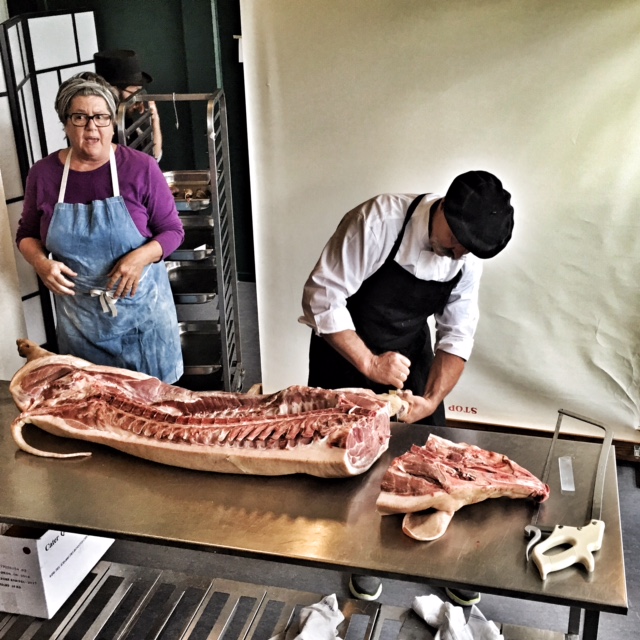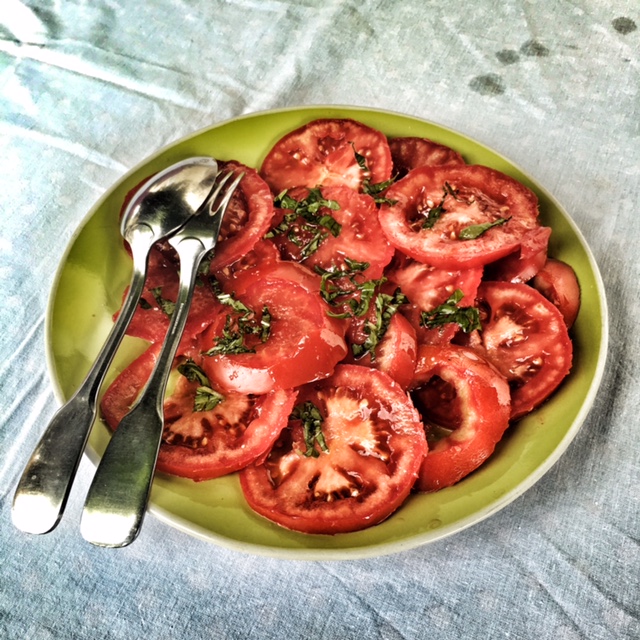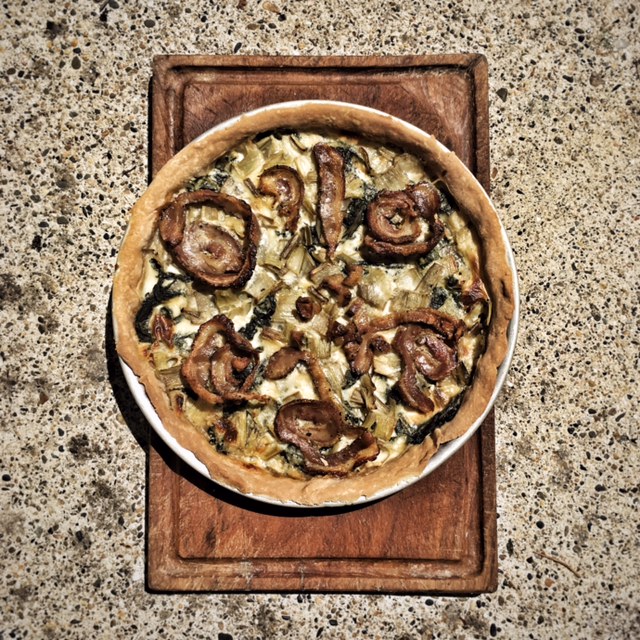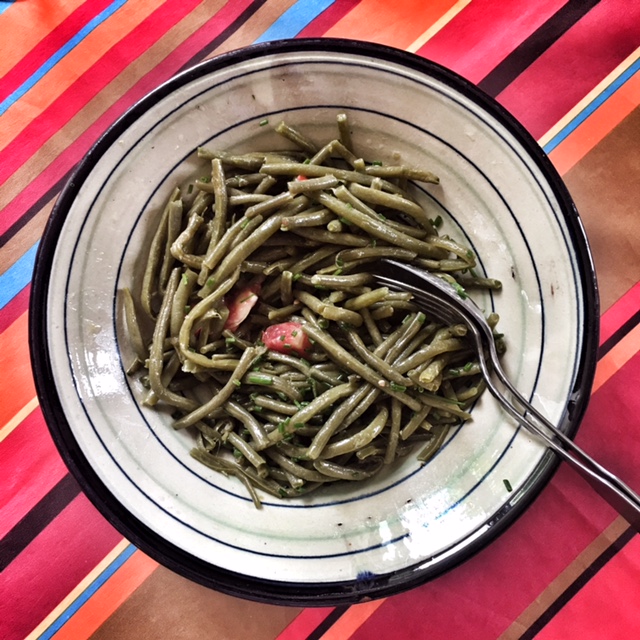This is the last of a 3-part series. You can catch up by reading Road Trippin' Across Europe (Prolog), Origins - part 1, and Meating Fellow Revolutionaries, part 2.
We were up early the next morning and ready to begin the formulation of the Manifesto. Michael had outlined five key points he wanted to touch on in our mission statement:
- Tradition
- Quality
- Education
- Craft
- People
For each of these subjects, Michael had assigned a speaker who would lead the discussion for 15-20 minutes after which we would begin a group discussion. All the speakers were experts in their respected fields.
TRADITIONS:
The “traditions” segment was lead Henning Wiesinger, owner of Steensgaard Farms, a Danish nose-to-tail farm, slaughter facility, and butcher shop.
They do it all under one roof, from “seed to sausage”.
He discussed how the connection between the farmer and butcher has become lost, but fortunately, Steensgaard has been instrumental in preserving this traditional method of butchery. The unique aspect of Steensgaard is their method and ideology of harvesting. Their animals aren't transported to a distant slaughterhouse - they are harvested right on the farm using a state of the art harvest facility. It is the farmers who know the animals and lead them to the slaughterhouse where they go in a special enclosure until they are slaughtered. This ensures the lowest possible stress levels to the animals. Once slaughtered, the carcasses are immediately hung up and broken down while still warm, ensuring a quality product. It also provides close cooperation between the farmer and butcher by creating opportunities for them to work together on meat quality and product development.
After Henning finished, we came together as a whole and tried to outline a statement on traditions.
We honor the valuable traditions of butchery.
It might seem very simple, but you have no idea how much discussion and thought went into that sentence.
QUALITY:
Adam Danforth, a James Beard award-winning author and butcher from Oregon then spoke on the topic of quality. Adam is an advocate for consuming older animals – these animals have more time to develop complex flavor in their meat. He also emphasizes flavor over texture, while the rest of the world buys the exact opposite. This discussion then led into another concerning the long-term sustainability of meat. The earth cannot support 7 billion people who eat meat every day. Adam's solution: eat less, but better meat.
Again, we converged for group discussion. The main point in this session was ensuring that superior quality was maintained through the whole process, from seed to sausage.
We insist on transparent and honest meat.
EDUCATION:
Michael lacked a speaker for his point on education. Moved by my non-traditional path to butchery, he asked me if I would be willing to speak on the subject the night before.
Me?
I was the youngest butcher there and had little experience compared to the old guys who were born with blood stained knives in their hands.
But I wasn’t going to turn an opportunity like this down.
After a quick lunch break consisting of some incredible beef cheek tacos, it was my turn.
I’ve done a lot of public speaking in my life. I even spent a lot of time acting as a kid and I’ve got two state titles to prove it. But, this was different. This was my career.
I’m not going to lie, I was nervous.
After a quick prayer, I took my place at the head of the room and began to tell my story: The revelation in my Entrepreneurship class at TCU, the slaughterhouse down in South Texas, selling my car to pay for a three-month apprenticeship at Fleishers in NYC, as well as my time in France and Italy.
The discussion that followed centered around setting up a cost-free international apprenticeship program among the butchers involved in the manifesto, with me as the example and guinea pig.
We promote the exchange of knowledge and expertise.
CRAFT:
Dominique Chapolard and Kate Hill handled “Craft.” While Kate talked about the Chapolard system and butchery in France, Dominique went to work on a half carcass, demonstrating his skills. Many butchers hadn’t seen a carcass broken-down with this method before.
We represent a craft that is the joyful expression of tradition and innovation.
PEOPLE:
Olga Graf and Akina Kai, two design thinkers from Berlin, were charged with helping these butchers think “outside the box.” They led a discussion revolving around the interactions between butchers and consumers.
We lead the conversation about responsible consumption of meat.
After Kate and Adam had tweaked the wording a bit, the Manifesto was ready to sign.
One by one, we were called to sign the document. A roar of applause filled the hall as Michael, the last to sign, finished his signature.
This was the first step in the organized meat revolution. As a craft, we have grown tired of the unethical practices and inferior products from large industrial meat companies. We have set in place guidelines by which we can organize behind.
Yes, it probably didn’t seem like much to you as a reader; however there was a lot of thought and conversation behind those five lines.
I’m sure they will be modified and changed at the next summit, but until then, it’s a start.
After a long day of discussion, carts of beer were rolled in. Everyone started breaking out his or her products for sampling.






























